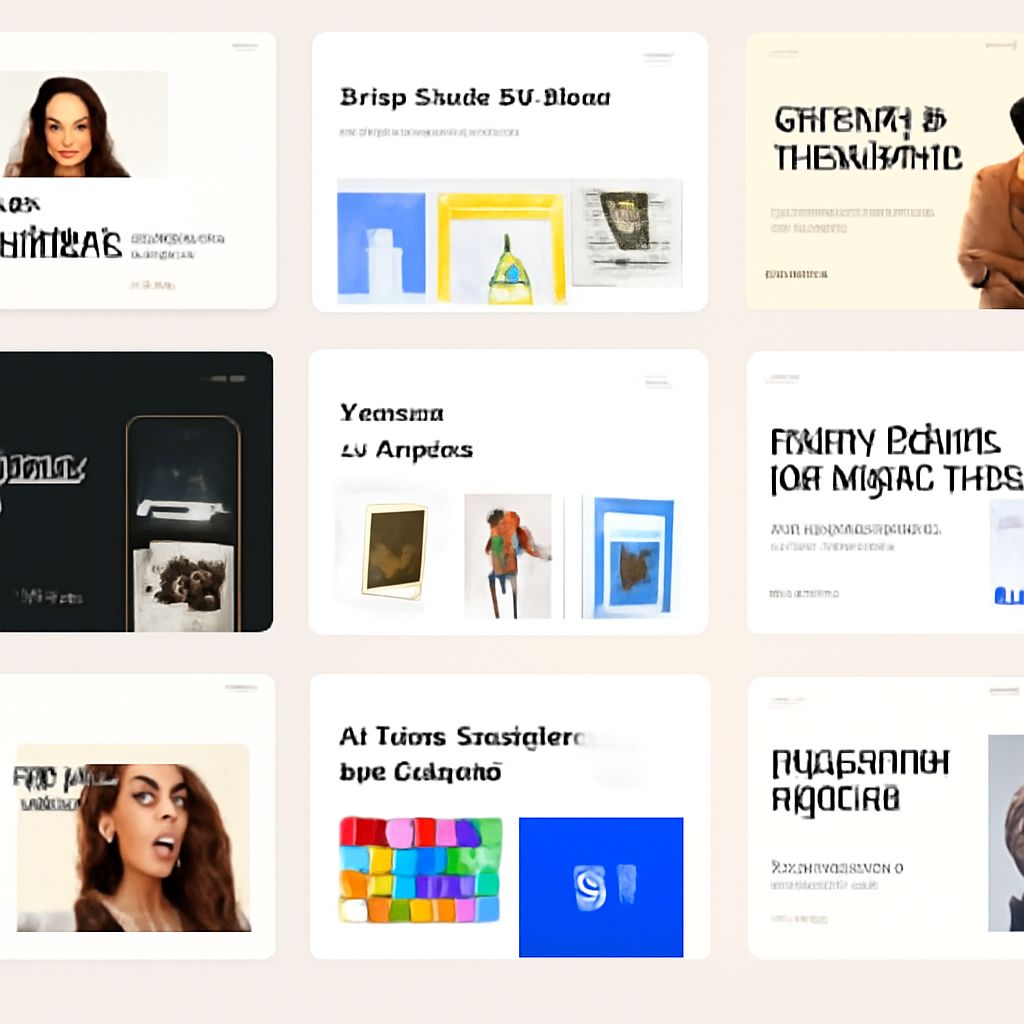Table of Contents
Transforming Your Online Presence with Modern Portfolio Designs
In today’s digital age, having a strong online presence is essential for anyone looking to showcase their work, whether you’re a graphic designer, photographer, writer, or any other creative professional. A well-designed portfolio website not only displays your projects but also reflects your personal brand and style. This article will explore ten inspiring modern portfolio website designs that can help you transform your online presence and attract more clients.
1. Minimalist Elegance
Minimalism is a design trend that focuses on simplicity and functionality. A minimalist portfolio can create a powerful impact with less, making it easier for visitors to focus on your work. A great example of this is the website of designer Daniel Spatzek, which uses a clean layout with ample white space to highlight his projects.
Key Features:
- Simplified navigation
- Large visuals
- Responsive design
2. Bold Typography
Typography can be a powerful tool in web design. Using bold and unique fonts can give your portfolio a distinctive look. The website of Sarah O’Brien showcases her work as a copywriter with striking typography that captures attention and conveys her brand’s voice effectively.
Key Features:
- Eye-catching headlines
- Custom font choices
- Strong visual hierarchy
3. Interactive Elements
Adding interactive elements to your portfolio can engage visitors and create a more immersive experience. For instance, Matt Farley‘s website features interactive animations that draw users in and make navigating through his work enjoyable.
Key Features:
- Hover effects
- Clickable elements
- Dynamic content
4. Grid Layouts
A grid layout can organize your projects neatly and make it easy for visitors to browse through your work. Emily Chen‘s portfolio uses a grid layout effectively, allowing her photography to take center stage while providing a seamless viewing experience.
Key Features:
- Structured organization
- Consistent spacing
- Easy navigation
5. Storytelling Approach
Using storytelling in your portfolio can create a deeper connection with your audience. Markus Huber shares his journey through creative writing, using a narrative format that draws users into his world and keeps them engaged.
Key Features:
- Personal anecdotes
- Visual storytelling
- Engaging content layout
6. Video Backgrounds
Incorporating video backgrounds can add vibrancy to your website and showcase your work dynamically. The portfolio of Julia Levit features a stunning video background that complements her graphic design work and captivates visitors.
Key Features:
- High-quality video content
- Seamless integration
- Enhanced visual appeal
7. Colorful Palettes
Color can convey emotion and set the tone for your portfolio. A well-chosen palette can reflect your personality and style. Alice Wong‘s website embraces a vibrant color scheme that reflects her artistic flair as a painter.
Key Features:
- Consistent color themes
- Color psychology
- Visual cohesion
8. Asymmetrical Design
Asymmetrical layouts break away from traditional design norms and create a fresh, modern look. Tommy Tran‘s portfolio utilizes an asymmetrical layout, making his work stand out while keeping the design visually interesting.
Key Features:
- Dynamic layouts
- Creative use of space
- Unique visual appeal
9. Integrated Blogging
Incorporating a blog into your portfolio can showcase your expertise and provide additional value to your audience. Katie Hart combines her portfolio with a blog, sharing insights related to her field of graphic design, which enhances her credibility.
Key Features:
- Regularly updated content
- Expertise showcase
- Engaged audience
10. Personal Branding
Your portfolio should reflect your personal brand. James Lee has crafted a portfolio that integrates his logo, color scheme, and overall aesthetic seamlessly, creating a strong personal brand identity that resonates with his visitors.
Key Features:
- Consistent branding elements
- Unique personal touch
- Memorable visual identity
Conclusion
Creating an inspiring portfolio website is crucial for transforming your online presence. By incorporating elements from these modern designs, you can create a portfolio that not only showcases your work but also expresses your unique style and personality. Remember to keep your audience in mind, ensuring your website is user-friendly, visually appealing, and reflective of your brand. With the right design, you can engage potential clients and stand out in a competitive market.
FAQ
What makes a portfolio website design inspiring?
An inspiring portfolio website design combines creativity, functionality, and user experience, showcasing the individual’s work while making navigation intuitive and visually appealing.
How can I choose the right portfolio website design for my work?
Consider your target audience, the type of work you’re showcasing, and your personal branding. Look for designs that resonate with your style and effectively highlight your skills.
What are the key elements of a successful portfolio website?
A successful portfolio website should include a clear layout, high-quality images, an engaging about section, a contact form, and links to social media profiles.
How often should I update my portfolio website?
You should update your portfolio website regularly, ideally whenever you complete new projects or want to reflect changes in your skills or personal brand.
Is it important to optimize my portfolio website for SEO?
Yes, optimizing your portfolio website for SEO is crucial to increase its visibility in search engines, helping potential clients and employers find your work more easily.
Can I use templates for my portfolio website?
Absolutely! Using templates can save you time and help you create a professional-looking portfolio, but make sure to customize them to reflect your unique style and personality.









